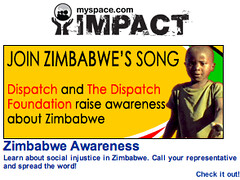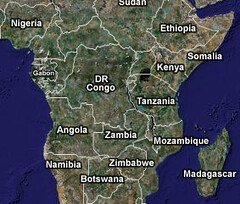The Most Effective Marketing A Non-Profit Can Do Is Build The Database
 I’ve been seeing more and more “brand awareness” campaigns, especially for non-profits and social good organizations lately, and I genuinely have to ask – what’s the value of that? From tweets on Twitter saying “Raise awareness of the plight of…” to advertisements on MySpace like the one to the right, awareness campaigns seem to be everywhere.
I’ve been seeing more and more “brand awareness” campaigns, especially for non-profits and social good organizations lately, and I genuinely have to ask – what’s the value of that? From tweets on Twitter saying “Raise awareness of the plight of…” to advertisements on MySpace like the one to the right, awareness campaigns seem to be everywhere.
What’s the value of awareness?
What’s the return on investment of awareness?
If I were a marketer for a non-profit, a social justice cause, or just about anything like this, I’d have to think long and hard about the value of my limited marketing dollars going towards headshare versus more actionable marketing.
 Let’s take this Zimbabwe campaign, for example. Ask the average American to locate Zimbabwe on a map and you’ll have an appallingly low success rate. Heck, ask them to locate the continent Zimbabwe is on and you won’t do much better. Why advertise an awareness campaign on a predominantly US-centric web site to an audience that likely can’t even find the target, and advertise in a way that has no action?
Let’s take this Zimbabwe campaign, for example. Ask the average American to locate Zimbabwe on a map and you’ll have an appallingly low success rate. Heck, ask them to locate the continent Zimbabwe is on and you won’t do much better. Why advertise an awareness campaign on a predominantly US-centric web site to an audience that likely can’t even find the target, and advertise in a way that has no action?
If I were trying to market this campaign, here’s how I’d approach it. If MySpace is the venue where in fact the audience for this campaign exists, fine. I’d put up a simple widget, maybe some scrolling scary pictures of what Mugabe does to his people, and have a “sign the petition” form with slots for name, address, email, etc. right below it, and the requisite opt-in to the mailing list checkbox, pre-checked for your convenience. Maybe make it a Flash widget that scrolled and displayed the last 50 petitioners’ names and locations.
This widget would in turn feed a nice SQL database that would aggregate the petitioners’ data and dump it into a mass mailer like Blue Sky Factory (disclosure: BSF is a sponsor of one of my podcasts, Marketing Over Coffee) and start soliciting donations. Sure, we could print out a list of petitioners and drop it on a politician’s desk, but I’d bet it would be far more effective, once a huge house list was amassed, to offer a politician’s PAC an email to the constituency on their behalf in exchange for their vote/support/introduction of legislation.
Forget spending money on awareness. We live or die on our database. The database is a tangible asset that has real, stored value which we can use for barter, trade, or sale (assuming you have the permission of the audience to do so). If you have scarce marketing dollars, if you have scarce resources, building up a marketing database is one of the fastest ways to add value to your non-profit, stay in touch with your constituency, drive donations and funding campaigns, and make real change in the world.
Yes, you have to use your database wisely, perhaps sparingly, always with the privacy and security of your constituency top of mind, but having an effective database is an incomparable value.
In the information economy, the non-profit with the most information, effectively used, wins.
Did you enjoy this blog post? If so, please subscribe right now!
Get this and other great articles from the source at www.ChristopherSPenn.com





